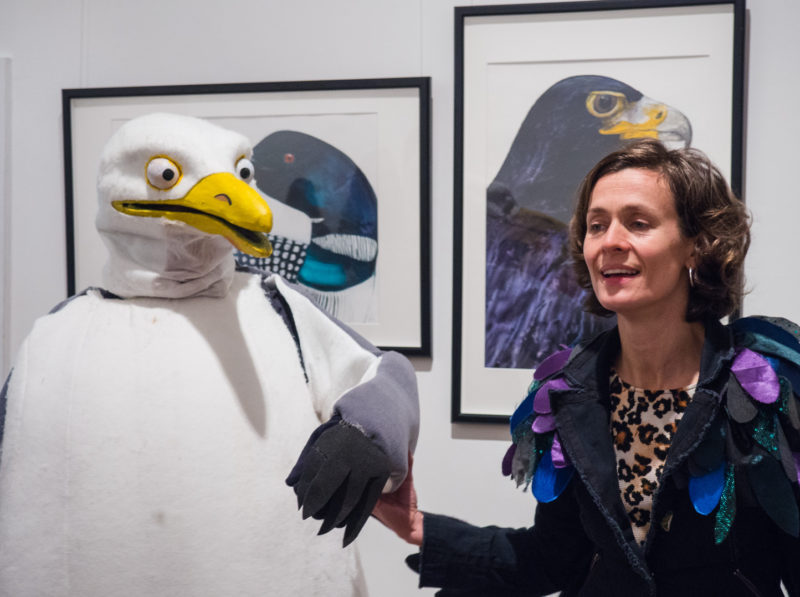Do You Speak Seagull?
Perhaps not…
It’s true that human speech and bird song share a complexity that suggests they may have a common genus. Yet, these biological roots cannot aid us in translation. The fact is, much like a Swallow’s memory of migration, a Seagull’s dialect is passed from generation to generation, incubated by the mimicking and memorising of a parent. Like how we learn language as toddlers, the nuances of a Seagull’s ’choking call’ (and most birdsongs) are accommodated by hatchlings thanks to the interpretation of unique social interactions by a complex motor sequence in the animal’s brain. As similar as we are then, a Seagull’s language is fundamentally inaccessible to humans – we do not, and cannot, truly speak Seagull.
You might have reflected on this whilst visiting ‘Do You Speak Seagull?’ at ONCA which ran from 23rd November – 11th December. The artwork downstairs – by Felix Prater – visually documents the lives of animals through point of view photography. When making this connection however, Prater emphasises it as a fundamentally imperfect experience. The snouts, or beaks of the animals used are clearly artificial, and the captions that accompany each shot are comedically colloquial. In this sense, Prater’s work questions the extent to which art and speech can accurately reflect the experiences of something inhuman. At the same time however it offers an innovative opportunity to see from this same decentred perspective.

Felix Prater, Video Still from 23:24 til 11:37
Whilst we cannot speak seagull, issues of climate change, environmental degradation and extinction necessitate that we need to quickly develop ways of identifying with different species. Elisabeth Pellathy’s Visualised Bird Song, which was situated in the main Gallery, suggests this. Pellathy renders the cries of 10 of the most critically endangered birds in the world in bell jars, sculpting the sound waves of their unique songs. In one sense, Pellathy’s immortalisation of momentary noise poignantly underlines the real risk of disappearance for the species in question. Yet, Pellathy’s work challenges our perspectives on another level. In encasing endangered birdsong in the silence of the bell jar, foremost an apparatus for biologists, taxidermists and collectors, Pellathy asks us to reflect on whether viewing extinction through a scientific lens imposes limits. Could conservation be better understood as a dialogue with inhuman voices? Would this provide a more organic, and interspecies-centred response?

Elisabeth Pellathy, Visualised Bird Song
I may not be able to speak seagull, and, indeed research from the Cornell Lab for Ornithology shows that their language is incredibly rich, individualised and versatile. Even if I were to persevere in learning to converse with an animal so often viewed as a pest, I am not privy to the complex and numerous social circumstances that allow fluency in such a dialect to develop. But, despite this language barrier, ONCA begins to explore how such boundaries can be surmounted. ‘Do you speak Seagull?’ underlined the link between conversation and conservation.
